
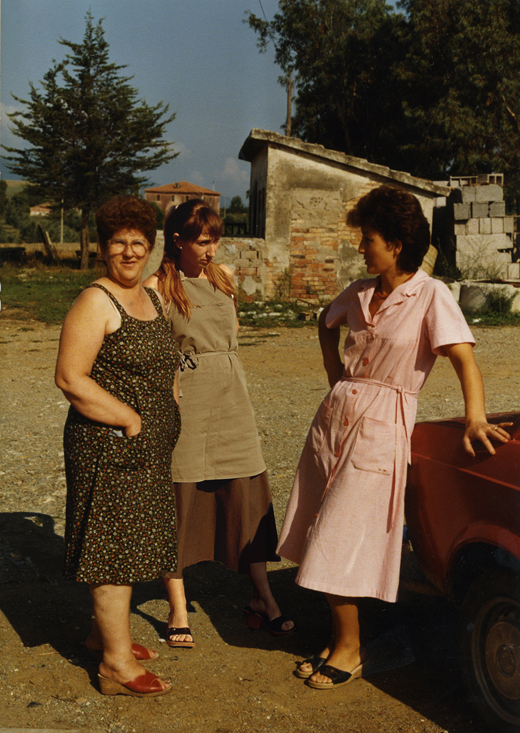
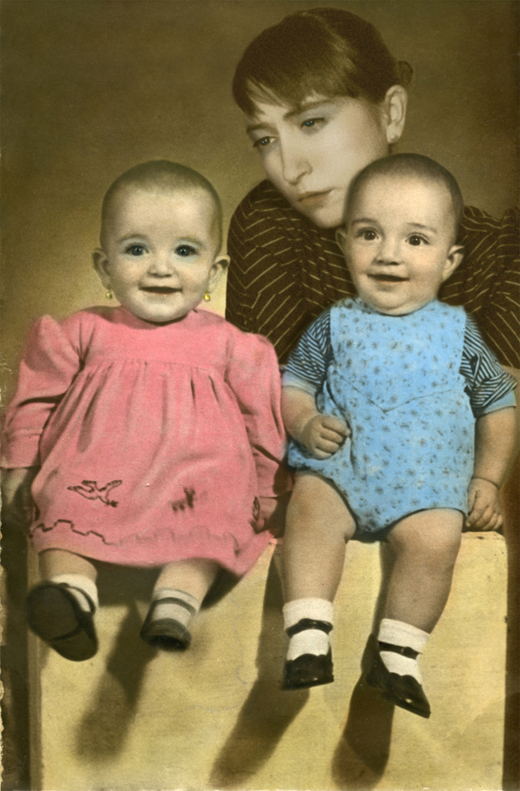
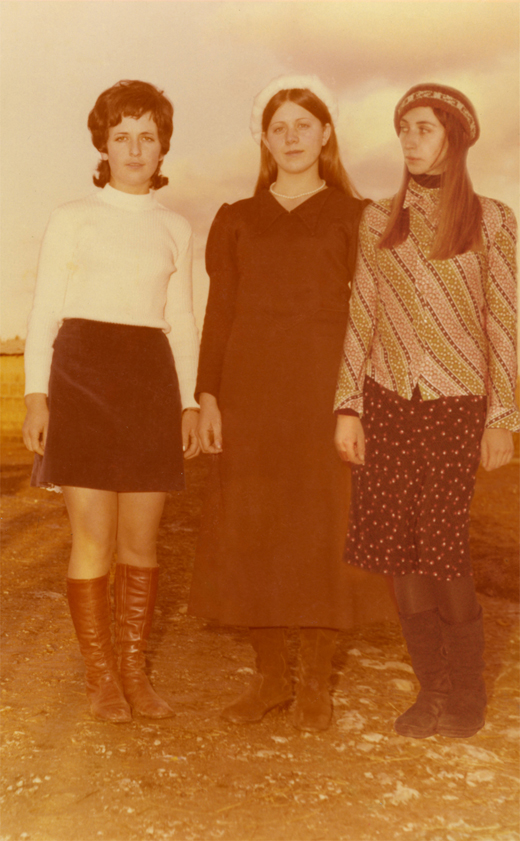
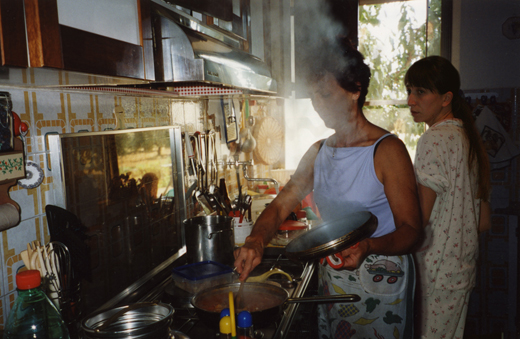

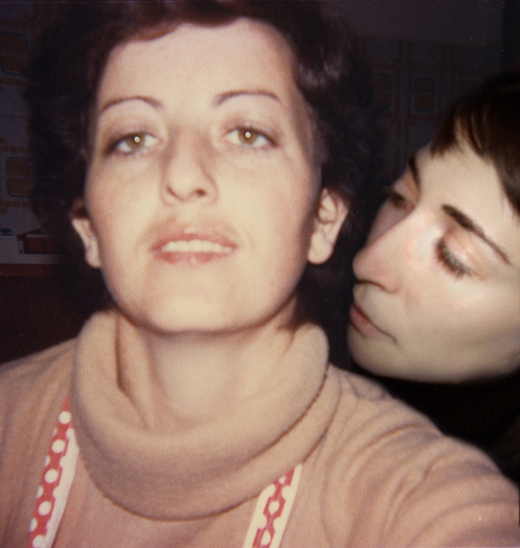

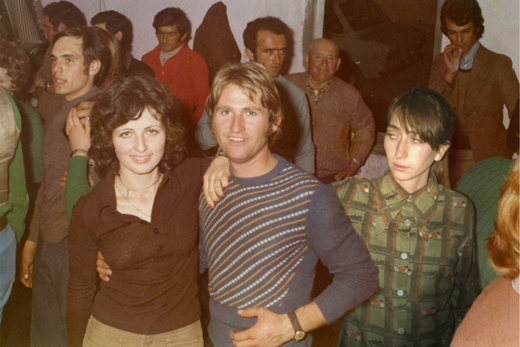
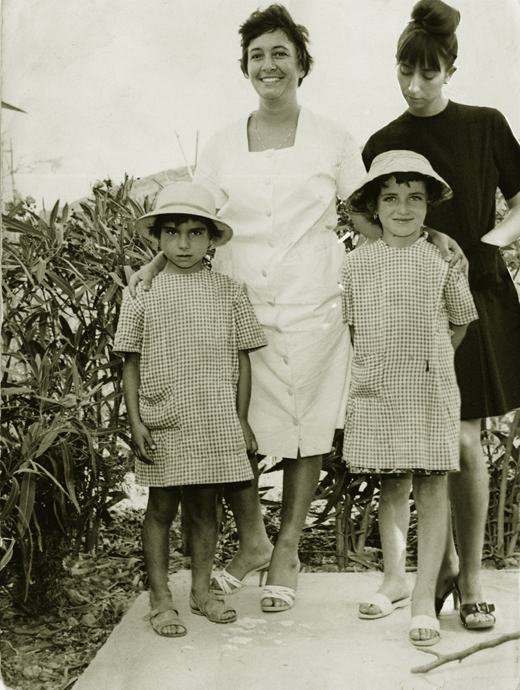

Some images in the series are black and white, some coloured by hand
and some yellowed by time. We understand from this and numerous other
details that the photographs date from different periods, and from their
amateurish snapshot aesthetic that they all form part of a family album
featuring the same people in different situations and stages in their
lives. Another constant presence is the figure of a slim young woman
with long black hair, upon whom time seems to leave no trace.
Moira Ricci delves into the photographs of the past following the tracks of her mother, whose dates of birth and death provide the series with its title and indicate the time span covered by the images. Digital processing of old family photographs enables the artist to appear beside and observe her mother while remaining an extraneous figure, a sort of ubiquitous ghost hovering on the edges of the images and events.
It is not, however, in response to retrospective needs that Ricci addresses these photographs of the past. She looks at reality in an attempt to overcome its spatiotemporal dimension by meeting her mother virtually in various moments of her life before her sudden death. Digital image manipulation serves the artist to eliminate temporal distance and use the photographs of her “family chronicles” to consider her mother’s past and her own present and origins at the same time.
Moira Ricci takes the intimate, family photographs lodged in the memory of every individual as the subject of her work. As the social psychologist Harald Welzer points out in his Theorie der Erinnerung (Theory of Memory), while these shots can sometimes come to replace our memories of situations we actually experienced, others taken in our absence remain alive and fixed in our memory as though we had really been present on the occasion shown.
Moira Ricci delves into the photographs of the past following the tracks of her mother, whose dates of birth and death provide the series with its title and indicate the time span covered by the images. Digital processing of old family photographs enables the artist to appear beside and observe her mother while remaining an extraneous figure, a sort of ubiquitous ghost hovering on the edges of the images and events.
It is not, however, in response to retrospective needs that Ricci addresses these photographs of the past. She looks at reality in an attempt to overcome its spatiotemporal dimension by meeting her mother virtually in various moments of her life before her sudden death. Digital image manipulation serves the artist to eliminate temporal distance and use the photographs of her “family chronicles” to consider her mother’s past and her own present and origins at the same time.
Moira Ricci takes the intimate, family photographs lodged in the memory of every individual as the subject of her work. As the social psychologist Harald Welzer points out in his Theorie der Erinnerung (Theory of Memory), while these shots can sometimes come to replace our memories of situations we actually experienced, others taken in our absence remain alive and fixed in our memory as though we had really been present on the occasion shown.
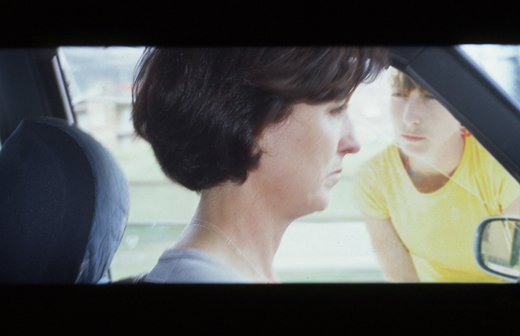
No comments:
Post a Comment